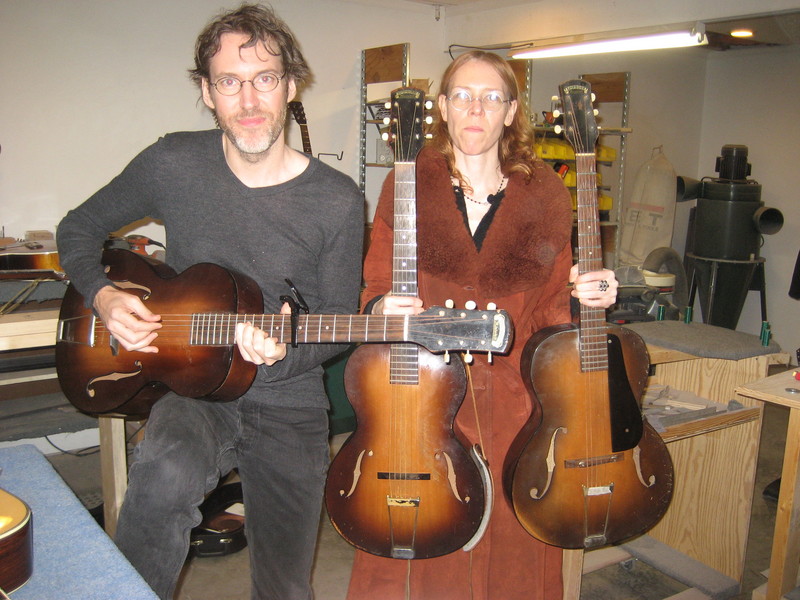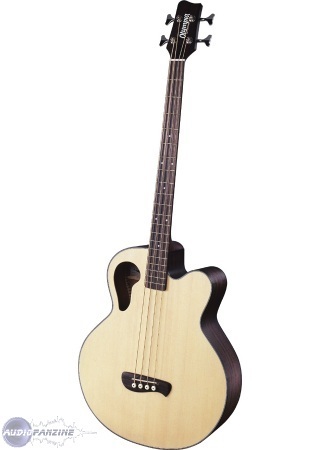The Summer Olympics are here and what better time to review some unique guitars bearing the name “Olympic.”
From 1931 through 1950 Epiphone offered an archtop guitar called The Olympic model. This was originally produced by the Staphopoli brothers in their New York facility.
For the first few years this model was fairly small as it was a mere 13” wide, with segmented f holes. By 1933 the width increased 5/8’ths of an inch.
 |
| 1934 Olympic |
In this same year the peak headstock was replaced with a non-peak version. 1934 saw the addition of an Epiphone decal logo with the words Masterbuilt underneath the company’s name.
 |
| 1938 Epiphone Olympic |
Three years later, in 1937, the body was widened to 15.25” and the f holes were no longer segmented.
 |
| 1937 Olympic tenor |
No more changes took place until 1942 when the logo was updated to have a tail underneath “Epiphone.” The guitar was a page in history by 1950, when the company discontinued the model.
 |
| Restored Olympic |
A different version of this same guitar was marketed in England from the mid 1930’s through 1937. Though produced or just marketed by Epiphone is somewhat of a mystery.
The guitar bore the logo, Apollo, but had an Epiphone Masterbuilt decal on the headstock. It’s body was wider than the Epiphone Olympic, 16” and it came with a standard black pickguard.
The body was made of either mahogany or birch. It may have been built by the Regal Musical Instrument Company for Epiphone distribution.
It was not until 1962 that Epiphone revived the Olympic name. This time it was on a series of electric guitars created during the Gibson CMI period.
The first version of the Epiphone Olympic electric was a thin solid body guitar with an asymmetrical double cutaway. It was Epiphone version of the Gibson Melody Maker. The instrument weighed in at under 6 pounds.
In 1965 the company made a radical change in design of the Olympic that became the basis for many Epiphone thin line solid body guitars.
The body bore a large white pickguard with a large Epiphone upper-case Ѱ, the Greek letter Psi, in the middle of the pickguard. In Greek, Psi translates to "spirit or soul."
The tailpiece was a Gibson Maestro vibrola with a white plastic handle, sometimes called the Walrus tooth arm.
Many of the Olympic models came with one Melody Maker style single coil pickup placed in front of the bridge. There were separate volume and tone controls. The input was mounted on top of the pickguard.
 |
| 1965 Epiphone Olympic |
The Olympic was also produced in a twin pickup model. This had the same type of pickups with an output of 7.16k and separate tone and volume controls for each pickup. All were mounted directly on the pickguard along with a 3-way Gibson style switch and the input.
This guitar came in a variety of colors. The 1965 Inverness Green model pictured here is very rare.
A soft shell lined case was standard issue with this model. In 1965 this guitar sold for $189.50.
Although Fender never did have an Olympic model guitar, one of Fender’s more popular shades of paint is Olympic White. The finish did not hold up on older models.
As you can see from the pictures, the paint takes on a yellow hue due to the lacquer used and aging. Personally, I like it.
Henley is a relatively unknown guitar distributor. Their products are made Korea. They offered a bass guitar with the name Olympic.
This bass has two pickups that are very different. In the rear the pickup is a Musicman style, while the front pickup is similar to what you would find on a Fender Jazz bass. This instrument has active controls mounted on its body. These include a pickup selector, volume control and a control for low EQ as well as one for high EQ. All hardware is made of die-cast nickel. The neck has a satin finish and the rosewood fretboard is topped with with offset pearloid position markers.
Henley Guitars are run by the husband and wife team from the UK Andy and Denise Henley. They import our own ranges of guitars and sell direct. Due to low overheads and they can offer excellent prices. Denise has a background in importing, shipping and freight. She runs all the administration side of the business and packing and shipping.
 |
| Tacoma Papoose |
 |
| Olympia Guitar |
 |
| Olympia guitar |
Olympia guitars came in various models made of differing woods. They also offered mandolins and acoustic bass guitars. All Olympia instruments are designed and set up in the USA .
Finally, there is a manufacturer from Columbia, South Carolina called The Carolina Guitar Company. They offer a distortion pedal known as the Olympia Fuzz. The manufacturer stated they were inspired by the Bender fuzztone and the Big Muff Pi fuzz and named after the Hammer of the Gods. This little pedal has received great reviews.
 |
| Anthony Ervin |
David Rawlings with his 1935 Epiphone Olympic













Tidak ada komentar:
Posting Komentar